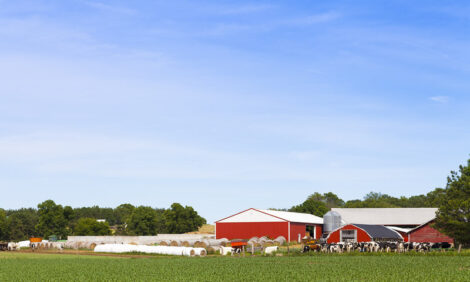



Are We Pushing Dairy Cows Too Far?
At the recent British Cattle Veterinary Association winter meeting, Karen Lancaster, Dairy Co Extension Officer discussed dairy cow welfare and asked whether we had pushed the modern UK dairy cow too far. Charlotte Johnston, TheCattleSite junior editor reports.Milk yields are ever increasing, but it is to the detriment of animal health and welfare? Ms Lancaster said that many of the issues that are topical today, mastitis, lameness and calving difficulties are no different to those that were seen 50 years ago.
The standard Holstein looks much different to one of 50 years ago, now a much larger and leaner animal. While genetics and breeding has improved substantially, a recent European Food Safety Authority report highlights this as the main cause of poor animal health and welfare. Ms Lancaster asks whether our management and infrastructure kept up with genetics and breeding?
Mastitis remains one of the largest costs to the dairy industry
In the UK, industry standards advise farms to work towards a target of 70 cows (ideally more)/ 100 cows/ year to be clear of mastitis. In practice the incidence of clinical mastitis is closer to 47-65 cows/ 100 cows/ year.
In a study carried out in 2007, a quarter of farms reported greater than 100 cases/ 100 cows/ year.
One major change noticed in this study was that the pathogens of the clinical mastitis cases identified were dominated by environmental pathogens (80 per cent). While contagious pathogens were still of more importance on some farms, this is a dramatic shift from 50 years ago, where contagious pathogens accounted for 90 per cent of clinical mastitis cases.
This shift in pathogens is likely due to increased parlour hygiene and the introduction of the Mastitis Five Point Plan.
National statistics suggest that a herd with a bulk milk somatic cell count (BMSCC) of 200,000 cells/ml is relatively well-controlled. Ms Lancaster said that a herd with a BMSCC of 200,000 cells/ml would have 20 per cent of the herd infected.
Although the prevalence of clinical mastitis has not changed much, the use of non steroidal anti inflammatory drugs to relieve pain has greatly improved cow welfare, said Ms Lancaster.
The use of teat seals during the dry period is another example of methods which have been adopted by the industry to reduce cases of mastitis and improve welfare.
Despite this prevalence has remained much the same. DairyCo launched a national mastitis control plan last year which produces farm specific advice.
Ms Lancaster said that initial results were promising and where farmers have had good levels of compliance, reductions of more than 20 per cent in their mastitis incidence have been achieved.
Housing issues
Another problem Ms Lancaster identified is that the cows have changed but the housing hasn't. As cows have got bigger they require larger amounts of space to move and lie down in.
Cows should ideally lie down for 14 hours a day, but in some sheds the reality is less than nine hours. Although there are a number benefits of increased time spent lying down, one of the main is reduced incidence of lameness.
The animals need appropriate access to feed, ideally there should be one feeding space per cow to allow constant access to feed for all animals. If this isn't the case then it will be heifers, sick and lame cows that will suffer.
Ms Lancaster also said that the flooring in cow sheds should be even and non slip. She advised improvements to poor flooring through the use of rubber matting along feed barriers, in the collecting yard and in sharp corners.
However as Ms Lancaster pointed out to the audience, all year round housing does not necessarily mean bad welfare. Extensive grazing in wet, muddy fields will lead also lead to serious health issues.
Breeding and genetics
Increases in milk yields seen over the years are down to breeding genetics, is this to the detriment of cow health?
Ms Lancaster said that PLI (profitable lifetime index) is constantly improving with new traits been added. Non production traits now make up over 50 per cent of the total.
The UK is one of the countries leading the way in the development of sound methods for genetic decision making, placing much greater emphasis on heath and welfare traits than other countries, Ms Lancaster said.
Current research includes finding sires to produce offspring more suited to the beef market. The Scottish Agricultural College (SAC), supported by DairyCo and EBLEX are investigating the opportunity of selecting for Holstein bulls that will sire offspring more suited for beef production by having a more muscular frame.
Introducing this trait into the PLI would improve musculature and fertility without compromising milk yield in the heifers.
Concluding Ms Lancaster said that the UK dairy industry had a duty to its dairy cows to ensure that their health and welfare is always considered in every decision and development it makes.
Whilst she pointed out a number of excellent initiatives within the industry including DairyCo mobility scoring and mastitis control plan as well as constant research by SAC and other organisations, Ms Lancaster said that the industry must ensure producers are using all the tools available to them.


